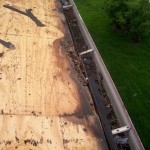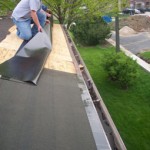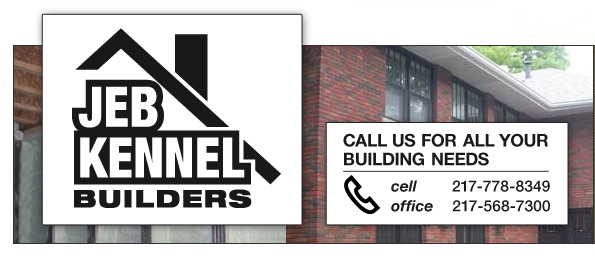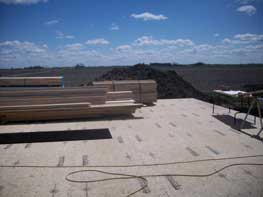
- Damage to Roof Sheathing from Ice Damming
Ice damming can occur on any home with a pitched roof. Winter snow begins to melt from the heat escaping from the attic on the underside of the roof sheathing. As it melts, water runs down the roof towards the eaves. The portion of the roof that extends past the wall on the bottom of the roof (commonly known as the overhang) does not receive any of the heated air rising out of the attic, so the snow does not melt at this location. When the water reaches this point, it becomes trapped and begins to cool, resulting in an ice dam. As water begins to pool behind the dam, it will begin to rise until it has enough pressure to run backwards up the roof. Shingles are designed to drain water runoff from one direction only. When water reversed direction, there is not protection. Water can get up under the shingles as it travels backward up the roof until it finds a relief where it will again descend the roof plane – but this time under the shingles. This problem can not only happen at the eave location, but also in valleys, areas around protrusions such as pipes, skylights, and vents, and also at locations where the roof meets a wall. Damage to the eave line can also be caused by gutters that have not properly been cleaned. If eaves troughs are full of leaves and water can not get away, it will sit on the roof long enough to build pressure and find its way under the shingles.

Appliction of WinterGuard
We design our roof applications so they will handle any type of water infiltration. The last layer of defence against the elements is the first layer applied to the sheathing, and it should drain as well as the top layer. That is why it is so important to use a product like WinterGuard. WinterGuard is a composite material of asphalt polymers, formed into a rolled sheet. The asphalt makes it vapor-tight, and the polymers make the asphalt elastic and sticky. This protective barrier is able to stretch and seal around nails driven through it. Placing WinterGuard a minimum of 24″ past the interior wall line at the eave provides the best line of defense against ice damming. WinterGuard is warranted against manufacturing defects and to remain watertight for the same period as the warranty duration carried by the shingles applied above it — up to a maximum of 50 years. This product can also be used under metal roofs and in other applications involving flashing details.
We use Winterguard as part of our underlayment process on a roof system, which is just as important as the shingles themselves. Shingles are designed to shed water, but they are not waterproof. When water does get underneath the asphalt, the sublayer must be able to handle it.
Some sure signs that ice damming may be occurring:
- Snow is melting but there is a line of ice or snow at the eaves that is not draining
- Water is dripping out of the soffit or gutter
- Shingles appear worn or faded on overhangs
- Shingles have rolling humps or dips on eave line
- Interior side of walls or ceilings have water damage under eaves
If you are concerned that ice damming is occurring on your home, give us a call and we will be glad to come out and make an inspection.
Tags: Ice damming, roof leak, roofing, roofs, underlayment


